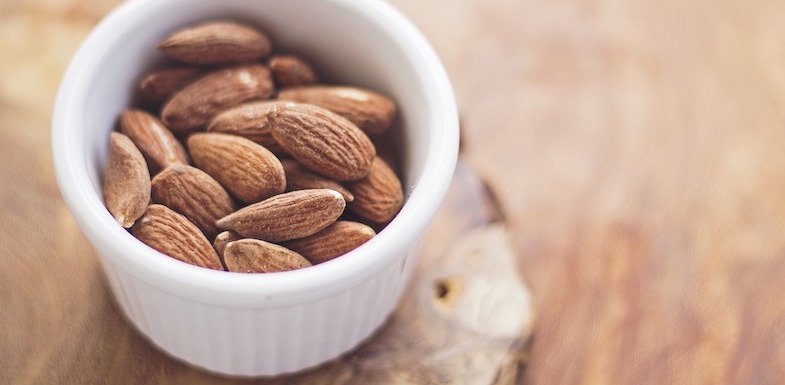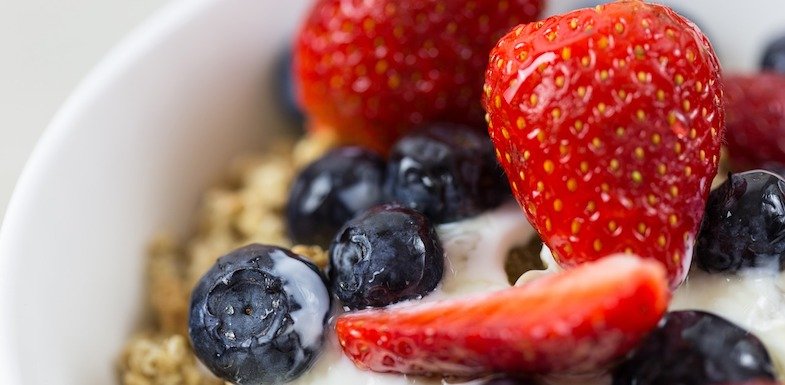
Being stressed-out seems like an ordinary part of life in this day and age. Trying to balance a hundred things from work to kids to a chronic pain condition can be difficult and overwhelming. When this happens, do you fall into the dangerous habit of emotional eating when the stress seems too much to bear? Emotional eating is eating specifically because emotions are high, rather than to satisfy actual physical hunger needs. Usually, the daily grind and high stress triggers high emotions and push you towards that pint of ice cream or your favorite comfort food. So why do we eat when we are faced with all these emotions?
The simple answer is pleasure.
There is nothing quite like a bite of chocolate when emotional or physical pain is high. The act of eating can help psychologically soothe negative emotions, ranging from anger and fear to boredom and sadness, albeit in an unhealthy and counterproductive way. It is easy to form a habit of emotional eating when you don’t have other ways to deal with stress and pain. This is especially true if you feel like it is your only source of relief and joy. This mentality has also been reinforced over the years, as we tend to reward ourselves with that salty or sweet junk food when we complete a tough project or have a long day at work.
Why is emotional eating such an issue?
The most obvious effect of emotional eating is obesity. There are a host of physical issues that come with being overweight, from heart disease to increased pain to diabetes. Gaining weight is also something that sneaks up on you, especially when you are in the midst of a stressful lifestyle. It can be hard to break the habit of overeating if you are unaware of it. Can you remember the last time you ate a whole bag of potato chips while watching TV?
There are also some severely damaging emotional issues that go along with emotional eating. Overeating can lead to deep feelings of shame and guilt especially right after a binging episode. If that isn’t enough, there is also a vicious cycle you can fall into between depression and emotional binging. Depression triggers your desire to eat, emotional eating perpetuates depression, and once it starts, it can go downhill quickly.
Dr. Stephanie Fulton, the lead researcher of this study from the University of Montreal, stated that:
“Data shows that obesity is associated with increased risk of developing depression… We are demonstrating for the first time that the chronic consumption of palatable, high-fat diets has pro-depressive effects.”
How do you break the habit and fight emotional eating?
Now that we have delved into the issues with stress and emotional eating, it’s about time that we develop some strategies to combat it. Here are five ways you can stop emotional eating in its tracks!

1. Keep a food diary
Keeping a food diary is a great way to cut down on mindless snacking and it will instantly increase your awareness of your eating habits. Make sure to record how you are feeling and how hungry you are during the day, as it will allow you to track your patterns and identifying what triggers affect you specifically.
Armed with this data, you will be able to make a plan of action and be better prepared when stress is high. Another big benefit for those who are trying to lose weight is that it will help you to avoid those extra calories. Not wanting to record those extra calories in your journal can actually be a powerful motivator.
2. Tame your stress
Easier said than done, but an important avenue to explore. Since stress usually provokes emotional eating, it is smart to start at the source and try to avoid getting into an unhealthy emotional state to begin with. Try taking a walk to boost endorphins and clear your head. Put on some relaxing music and let your mind wonder. Eat a small, healthy snack like hummus or veggies. Do a few yoga poses to release built-up muscle tension. Take ten minutes to meditate and clear your mind.
There are lots of ideas to choose from to relieve stress and most of them are simple, free, and powerful, so don’t feel like the only thing you can do is turn to a candy bar.
3. Build a support network
You are far more likely to fall into emotional eating if you lack a strong support structure. We all need help sometimes, so occasionally lean on family and friends when you are having a rough time.
Don’t scoff or ignore the issue if you need more specific help. Joining a support group, talking about your issues on online forums, and going to therapy can all do wonders for your emotional state. Emotional support helps ease stress. You don’t have to take it on alone. Ask for help when you need it.
4. Forgive yourself and celebrate success!
Just realize that you will make mistakes. The last thing you want to do is get into a shame spiral about eating that slice of cake. Doing so will only lead to more feelings of shame and guilt, and likely more failure down the road. Instead, admit your mistakes when they happen, forgive yourself, and refocus on succeeding.
Don’t take your achievements lightly! It is good to celebrate and tell others that you are improving. Confidence-building will lead to more success and soon you can break the habit of emotional eating when you are stressed-out and overwhelmed.
5. Remove temptation and have healthy alternatives on-hand
It can be easy to say you won’t buy any more of your favorite comfort foods when they are still in your home, but not having them around is one of the best ways to avoid binging. It is also a good idea to avoid grocery shopping when you are hungry or in a negative mindset. Another way to avoid unhealthy choices is to make sure you always have a healthy alternative around when emotional cravings start. A small, healthy bag of almonds is always healthier than going for that glazed donut. We give even more examples of healthy junk food swaps in the next section!
Eat this, not that: healthy junk swaps


Stress can be a big problem when you are trying to stick to a pain-friendly diet. Hunger cravings are already hard to ignore and it has become all too easy to grab a candy bar or run to the local fast food joint for a quick fix. The issue is that fatty and salty food creates more inflammation in the body. For those who have chronic pain, maintaining a healthy diet is a critical front line defense. So how can we combat this instinct to grab a sugary treat when we are stressed and hungry? The answer is simple, but not always easy: have comfort food on hand that is both satisfying and healthy. To achieve this goal, lets take a look at some delectable healthy junk food swaps that will help appease your hunger without making inflammatory conditions worse.
Instead of: Potato chips
Who can say no to crispy, deep-fried, salty slices of potatoes in 100 different flavors? It is so easy to walk to your pantry and grab a handful or, if you are really hungry, devour half of a bag. The problem is all that salt and grease can really do a number on your body and lead to painful side effects.
Try: Baked zucchini chips
This tasty treat can be made in big batches ahead of time so that when hunger strikes, you can get a mouthful of something healthy and crunchy. They are super easy to make and only require some chopping and seasoning before you throw them into your oven. Baked zucchini chips are a healthy junk food swap that is much better to snack on than their bagged cousins.
Instead of: Candy
We have all walked through a store or gas station and grabbed some candy as an impulse buy. It should come as no surprise then that sometimes we crave candy again when our stress is through the roof and we want something easy and pleasurable. Candy bars are as deceptive as they are yummy because they are small, but packed full of nutrientless calories. The saturated fats and sugars in them can also contribute to high cholesterol, blood pressure, cavities, and inflammation. Beware the dreaded sugar crash!
Try: Cacao nibs
This organic snack is made from whole cacao beans and is known as nature’s chocolate chips. Cacao nibs are rich and crunchy. And, they provide a burst of chocolate flavor without all the sugar found in junk food products. A big plus is that they are also a fantastic source of antioxidants, magnesium, essential minerals, and fiber. They go great in a smoothie or if you just want to grab a few to satisfy a craving.
Instead of: Cookies
It’s hard to say no to one small cookie when you just need a boost of energy. I mean, how bad could just one Oreo be? The bigger problem comes when you sneak two or three and realize you have gotten almost no nutrients for all those calories. Cookies are also commonly packed full of large quantities of added fat as well as refined flour and sugar. In short, they will most certainly wreak havoc on any body.
Try: Homemade granola
Granola is an excellent choice when you are jonesing for a baked good that won’t stuff you full of sugar. Since most granola sold at the store is full of sugar, try making a big batch at home for a healthier option from Oh She Glows food blog. Even better—you can make another version from the Cookie and Kate blog in 30 minutes or less! The great thing about granola is that you can add so many different things into it so that every batch is different. Try adding coconut, honey, apricots, or figs. Anything from the nut family is also tasty, like almonds, pecans, walnuts, or cashews. It is so varied that this healthy junk food swap can be a common day-time snack or after-dinner treat that will leave you full and guilt-free.
Instead of: Energy drinks
Most energy drinks are packed full of unhealthy ingredients, including large amounts of sugar. A standard 16-ounce energy drink has about 250 calories. It can also have 240mg of caffeine (over two cups of coffee) as well as almost 60g of sugar! Even small shots that are popular today may contain over 100 calories. All that sugar is not good for you, but on top of that, the caffeine can cause a slew of other issues such as irritability, nervousness, and sleeping issues.
Try: Green tea infused with natural fruit
If you’re looking for a bit more pep in your step, and just a bit of flavor, look no further than green tea for one of the best healthy junk food swaps! Green tea is packed with anti-inflammatory antioxidants, and may even improve memory and help regulate weight. Jazz up your green tea by getting it on ice, and then adding a few splashes of freshly-squeezed orange or lime juice, steeping your tea with some slices of strawberry or peaches, or even muddling some berries into the bottom of your glass. For a truly pain-fighting drink, check out this cherry ginger infused green tea recipe!
Instead of: Processed peanut butter
Most big-name peanut butter brands that you buy in stores contain quite a bit of hydrogenated oil (translation: trans fat). This can raise cholesterol levels and increase inflammation in the body. There is also many other added ingredients that help kick up the flavor such as salt, corn syrup, and honey. This U.S. childhood favorite isn’t all bad, but it should definitely be on your list to be wary of.
Try: Soy nut butter
Soy gets a bad rap sometimes, but when it comes to an alternative to peanut butter, it should be praised for its taste and texture. Not only does soy nut butter contain no trans fat, but it also offers an amazing seven grams of soy protein per serving. Try this delicious spread on some whole wheat bread for a guiltless meal your body will enjoy almost as much as you.
It can be tough to resist those hunger cravings when your body is in high stress mode. What healthy junk food swaps have you tried before?